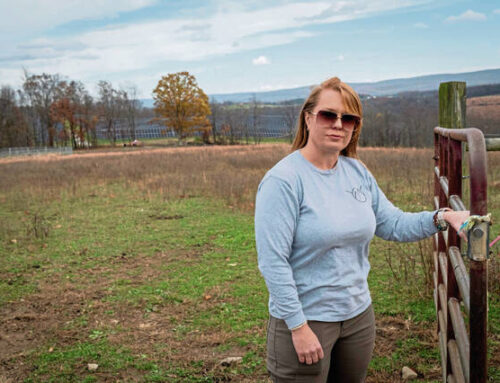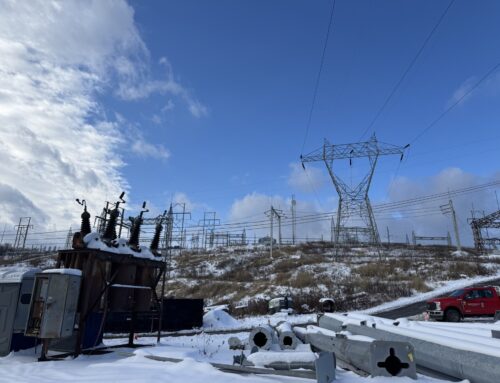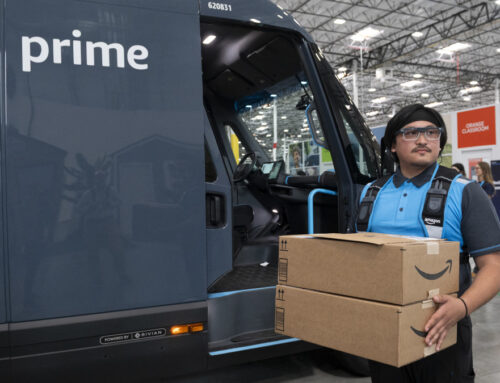FedEx Exec: Amazon Delivery Partnership ‘Will Push Up Our Yield’
May 13, 2025
Amazon and FedEx are reviving a ground delivery partnership after a six-year hiatus.
The companies reached a multi-year deal in which FedEx would provide last-mile residential delivery of select large packages for Amazon.
The deal resuscitates a relationship that ended in 2019, when the last contract between the two companies expired. FedEx stopped performing ground deliveries for Amazon packages at the end of the deal as the logistics firms operated more as competitors, and the e-commerce giant expanded its logistics network. Third-party sellers using Seller Fulfilled Prime on Amazon’s marketplace could still use FedEx as a shipping option.
Full terms of the deal were not disclosed.
“We’ve reached an agreement with FedEx to serve as one of several third-party partners to deliver packages to our customers,” said an Amazon spokesperson. “FedEx joins our other third-party partners like UPS and the USPS, that work alongside our own last mile delivery network to help us balance capacity to best serve customers.”
A FedEx spokesperson called the partnership “mutually beneficial.”
“The yield will be accretive to our system average in the domestic market,” said FedEx chief customer officer Brie Carere during a Bank of America investor conference Monday. Carere touted the logistics company’s ability to “move heavy-to-handle packages better than anyone.”
“You will see that this business is predominantly large-package, so it is not the average weight that Amazon and UPS have,” said Carere. “It will be part of the FedEx Ground portfolio. It will be parcel, but it is heavier weight. It’s going to push up our average weight per package, and it will push up our yield.”
Amazon’s team-up with FedEx comes months after UPS revealed its goal to cut shipment volumes for the tech titan by more than 50 percent by the second half of 2026. Amazon is UPS’s largest customer, accounting for 12 percent of its revenue in 2024.
But according to Amazon, the FedEx deal is not meant to replace UPS volumes, with a spokesperson saying claims otherwise are “flat wrong.”
“My initial read of the situation is that Amazon views these shipments as harder to move through its in-house delivery network than smaller packages (and UPS has the same view),” said Jason Miller, interim chairperson, department of supply chain management at Michigan State University’s Eli Broad College of Business.
Miller told Sourcing Journal these shipments could offer “FedEx an opportunity given its network structure to take advantage of UPS’ strategic decision to reduce business with Amazon (which isn’t as profitable as package deliveries for other e-commerce platforms because Amazon’s volume discount cuts into UPS’ margin per delivery).”
Business Insider first reported the news of an Amazon-FedEx partnership Monday afternoon.
The publication said it viewed an internal document that gave Amazon “cost favorability,” but didn’t reportedly specify the extent of how many packages would be handled by FedEx.
That document also apparently pointed to “capacity constraints” in Amazon’s network that “securing FedEx capacity” would help solve.
Although Business Insider said the document outlined FedEx’s work within Amazon’s Extra Large delivery network for bulky items like TVs and furniture, the e-commerce giant called the reference to that element of the partnership “premature at this point.”
Amazon is still largely self-reliant. More than two-thirds of Amazon packages are delivered via Amazon’s own logistics network in the U.S., the company says.
Of the four major American parcel carriers, Amazon saw the biggest year-over-year jump in volumes at 7.3 percent in 2024, according to Pitney Bowes. Amazon’s 6.3 billion parcels delivered were only behind the USPS, which delivered 6.9 billion packages.
FedEx was the only of the U.S. carriers that saw a parcel volume decline, at 3.6 percent from the year prior to 3.7 billion.
In partnering with Amazon, FedEx gets another revenue stream to help fill that it lost its air cargo contract with the USPS to UPS last year.
Last year, another report from The Wall Street Journal had said the logistics companies had entertained a returns partnership in 2023, in which FedEx would accept returns of Amazon packages at its more than 2,000 FedEx Office locations.
A FedEx spokesperson called the conversations “normal course of business” for the company. A deal never materialized.
The recent partnership also comes as Amazon furthers its rural delivery push, investing another $4 billion into its network.
The investment is geared to expand the network’s rural footprint to over 200 local last-mile distribution centers and is estimated to create over 100,000 delivery and warehousing jobs. Upon scaling the network, delivery time are expected to be cut in half on average.
When the expansion is complete in 2026, Amazon said it will triple its rural network, enabling the delivery of over 1 billion more packages per year to customers in more than 13,000 zip codes spanning 1.2 million square miles.
According to supply chain consulting firm MWPVL International, Amazon’s U.S. delivery network has 1,445 active facilities and 164 future facilities as of the 2025 first quarter. Of the facilities set to be built, 104 are the local last-mile distribution centers that the company refers to as “delivery stations.”
Search
RECENT PRESS RELEASES
Related Post



